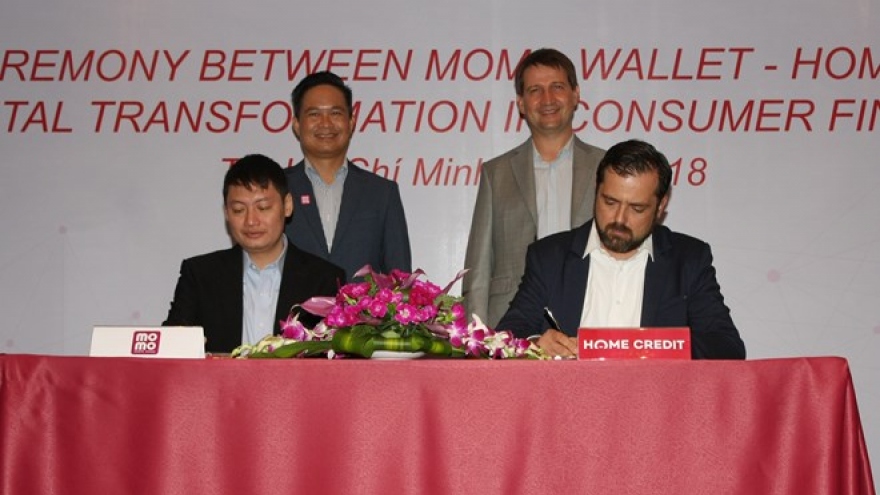Developing the financial infrastructure for a cashless society
VOV.VN - While the proportion of the national economy driven by cash transactions remains immense, experts believe that there will be a major shift toward using cashless payments in the coming time with drastic measures taken by the Government.
 |
Aside from banks, there are 27 intermediary payment service providers in operation offering products such as e-wallets, electronic money transfers, and electronic payment portals.
Cash is still king for most payments
Despite the rapid increase in the number of banks and payment brokerage providing modern payment services, cash payments still account for the huge proportion of transactions throughout the country.
According to recent statistics by Visa Inc, cash and cheque transactions make up 55% of individual spending in the Asia-Pacific region while the figure for Vietnam is estimated to be as high as 90%. Although there has been robust growth in e-commerce, Visa say that cash payments still constitute 89% of online transactions in Vietnam.
In response to customers persevering in the use of cash payments amid the surge in new methods of payment by banks and payment brokers, Kevin Martin, Head of Retail Banking & Wealth Management Business for Asia-Pacific at the Hong Kong and Shanghai Banking Corporation Limited (HSBC), the situation is attributable a lack of non-cash payment options and this is a common factor in many nations in the Asia-Pacific region.
Pham Tien Dung, Director General of the SBV’s Payment Department also gave some reasons for the wider use of cash in almost all payment transactions such as the convenience and consumer habits, with people reluctant to change their payment methods due to the perceived insecurity of electronic payment systems in remote areas and banks’ difficulties in collecting fees for payment services.
Moreover, in some cases, incurring extra charged when making payments through banks is also a major sticking point for customers.
Non-cash payments are on the rise
However, while the predominance of cash transactions remains a challenge for the proponents of e-payment systems, experts say the prospects for a non-cash society are completely feasible as banks and payment brokerage organizations have paid special attention to the application of digital payment solutions, thus contributing to the widespread use of non-cash payments in the national economy.
According to statistics released by Mr Pham Tien Dung, there has been a swift rise in the use of non-cash payments via modern payment forms. In the month of June 2018, there were 127 million payment transactions through Internet banking, valued at VND8,020 billion, while the number of payments via mobile banking surged to 81 million, with a valued of VND676 billion.
The most recent statistics from Visa have shown a 44% increase in payments using their cards in Vietnam for each month in the period from July 2017 to May 2018.
These figures represent a remarkable expansion in the use of non-cash payments. Under the SBV’s development strategy until 2015 with orientations to 2030, towards a cashless payment economy, the government has set a target of cutting the proportion of cash used in all payment methods to below 10% by the end of 2020 and to 8% by late 2025.
To fulfill the mentioned targets, the Government has asked that the banking sector implement solutions to diversify channels providing banking services.
The sector is also being encouraged to deploy a nationwide ATM and POS network nationwide, encourage cooperation among banks and Fintech companies, devise policies to expand the number of cash access points and introduce modern payment methods to the wider population especially those living in remote and difficult areas.
Dinh Ba Tien, a member of the Board of Directors of VietUnion (Payoo) pointed out that to speed up cashless payments, beyond the determination of the banking sector there should be synchronized coordination among relevant ministries, agencies, localities and business communities.
Management agencies should consider incentivising the use of new e-payment methods such as QR codes and in terms of fees and mechanisms to allow service providers to receive bill payments for services regarding electricity, water, taxation, schooling fees. Furthermore, particular attention should be paid to the development of common standards in payment connectivity.


